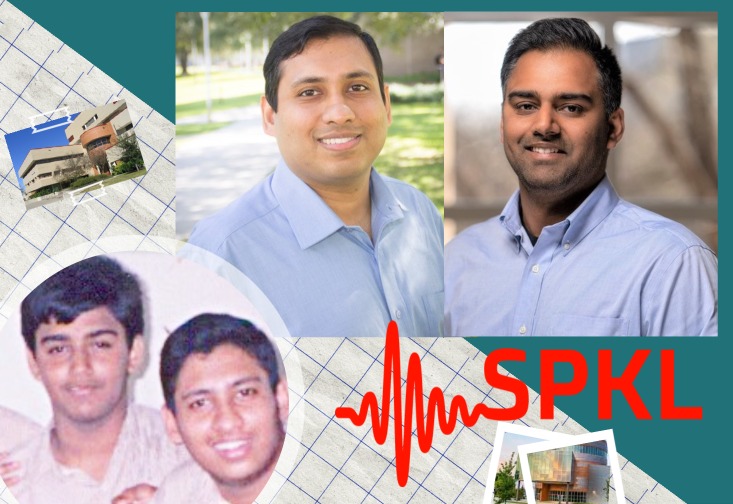A friendship formed in middle school a half a world away is the foundation for a new USF startup working to bring better blood flow measurement technology to market.
TAMPA, Fla. – What are the chances? Two boys growing up in a city on the Bay of Bengal become friends in middle school, but go their separate ways as they grow older. Years later, they reconnect as young men whose engineering studies have brought them to the United States. By coincidence, their paths bring them both to the University of South Florida - one as a graduate student and one as a new faculty member – although seven years apart.
Then one, Assistant Professor Ashwin Parthasarathy, invents a technology with the potential to revolutionize how doctors monitor ill patients by precisely monitoring blood flow through tissues with an inexpensive and portable device. But to turn his cutting-edge idea into a real-world technology takes more than just brilliant innovation - it takes a business expert with experience in the biotechnology field. Luckily, his boyhood friend, Karthik Sriram – who earned a MBA from the Wharton School after earning a master’s degree in biomedical engineering at USF in 2007 – just happens to be that person.
Now the two childhood friends from Chennai, India, are the team behind SPKL, LLC., a startup that’s a finalist for the Cade Prize, one of Florida’s most prestigious awards in innovation. Their innovation is a wearable, optical-based technology designed to give health practitioners more accurate reads of blood flow, a key factor in treatment and monitoring of strokes and a variety of other diseases.
“It’s a fantastic idea,” Sriram said. “I am not surprised his idea is going places.”
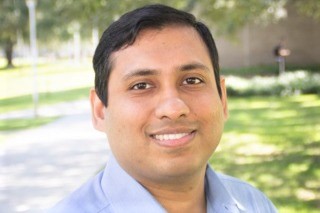
Ashwin Parthasarathy
Parthasarathy, who joined USF’s engineering faculty in 2016, leads the Translational Optics Imaging & Spectroscopy (TROPICS) Lab at USF’s Department of Electrical Engineering, which is focused on the development and application of novel optical/opto-electronic instrumentation for the diagnosis, monitoring and characterization of diseases.
Sriram, who lives in New Jersey, has been a development and management executive with life sciences and biotechnology companies since earning his MBA in 2019. During his graduate school years at USF, he also was a business development and intellectual property management intern at USF Research & Innovation’s Technology Transfer Office – the division of USF Research & Innovation where faculty patents and startups get are put into motion - making it yet another way his involvement in developing a USF invention into a startup has come full circle.
SPKL was founded on the premise that optical technologies can be developed into noninvasive tools that quantitatively measure tissue function or physiology, helping doctors and surgeons make better decisions at the patient’s bedside. The company’s mission is to improve the accessibility of bio-photonic devices by making them smaller, lighter and more affordable – elevating optical tissue monitoring as standard of care for many diseases.
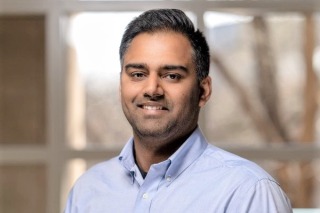
Karthik Sriram
The technology has potential applications for treating strokes, traumatic brain injuries, cancer, wounds and peripheral vascular disorders. Blood flow – a direct measure of the body’s in supplying oxygen and nutrients to organs – is an important measure of tissue health, Parthasarathy said, but there are no widely available, inexpensive and efficient commercial instrument to measure it. The new device is based on how light interacts with the motion of red blood cells, which allows for the direct measurement of blood flow, the team said.
Currently, only a few technologies offer healthcare providers limited capability to quantitatively measure blood flow at the bedside. Magnetic Resonance Imagers (MRIs) can measure blood flow, but they are not portable, are very expensive for hospitals to obtain and operate, and can’t be used on all patients.
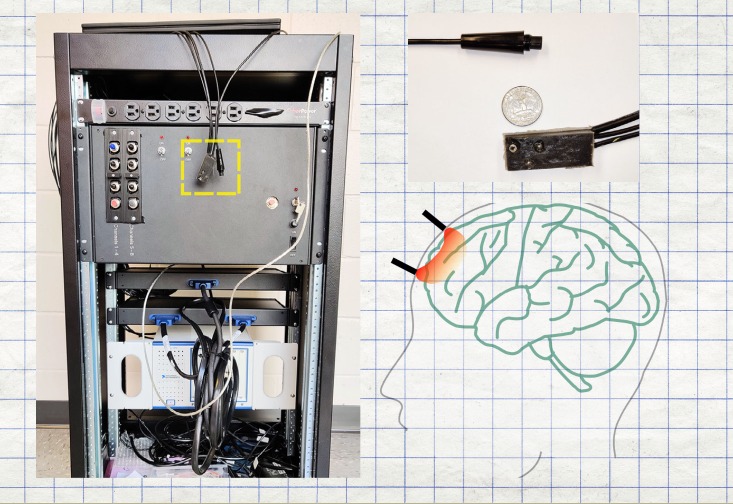
A prototype of the SPKL technology is in development. The current state-of-the-art device on the left is significantly larger and more expensive than the anticipated final technology.
As a result of this technological gap, doctors and surgeons often make clinical decisions using surrogate measures that poorly approximate tissue blood flow. Ultrasound/laser Doppler instruments can only be used on large blood vessels, and have poor sensitivity to capillary or microvascular flow, Parthasarathy said.
SPKL directly addresses this limitation, with a wearable, noninvasive device for continuous monitoring of blood flow. The instrument can be used on any tissue, from brain to muscle, and it can be adapted for endoscopic use to measure tissue blood flow deep in the body.
“I’d like to think we can make it so common that everyone has a blood flow device,” Parthasarathy said. “We’d like to make it as common as a thermometer.”
It was during a telephone conversation where the two friends were catching up with each other that Parthasarathy told Sriram about the technology he was developing and his desire to get the new idea to patients who needed it.
“I said, ‘You are a really smart guy. You should think about turning your idea into a company,’” Sriram said.
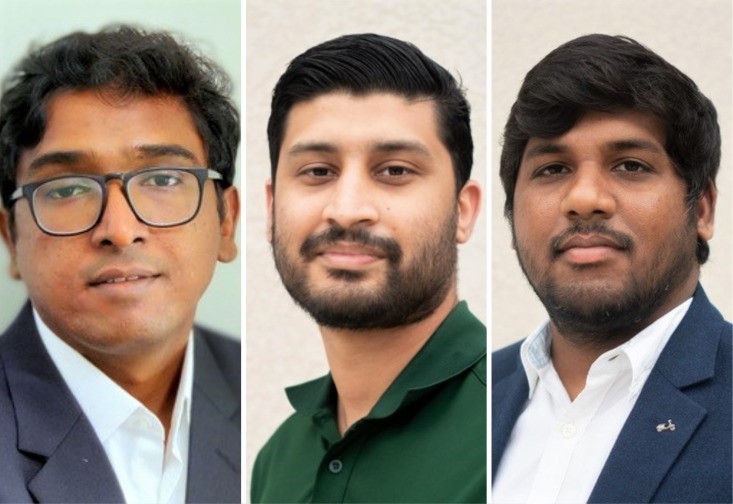
The team at the TROPICS Lab: Arindam Biswas, Abdul Mohaimen Safi and Sadhu Moka.
The team has been developing the patent-pending technology since 2019 and in early 2020 participated in USF’s I-Corps boot camp, a National Science Foundation-funded program that teaches faculty and students how to begin the process of taking an idea from the lab to market. Working with business mentors from the USF faculty, I-Corps teams learn how to identify potential customers, adapt their inventions to address real-world problems, and begin identifying potential funding sources and investors to support the project in its development.
Parthasarathy said he has continued to refine the technology as the research and development process continues with an eye on making the device smaller and less expensive so that any hospital – regardless of location or financial resources – would be able to have it and eventually it could be something that individual could own, like a blood pressure monitor.
“It’s a way of democratizing the technology,” he said.
“He wants to get this life-saving technology to people,” Sriram added. “He’s always been driven by how can he help people.”
Prototype versions of the invention are currently undergoing bench testing in the TROPICS lab. Parthasarathy credits electrical engineering PhD students Arindam Biswas, Abdul Mohaimen Safi and Sadhu Moka, for the incredible progress made in realizing this idea into a prototype. Results demonstrating the feasibility of the invention have been presented at scientific conferences, such as the Optical Society of America and the Society of Optical Engineers, where it won best presentation awards. The research team has journal articles on their project currently undergoing peer-review.
Their collaboration is still separated by geographic distance, but get the two on a phone call together and the easy rapport of childhood friendship soon emerges, giving a unique dimension to their startup partnership – almost as if they were destined to be team.
“Ashwin was a kid who had a plan, I had zero idea of what I wanted to do,” Sriram said as he described their intersecting academic and professional paths, each attaining a considerable measurable of personal success before reconnecting.
“I didn’t have a plan,” Parthasarathy responds.
“Well, that makes me feel better,” his friend laughs.
The Cade Prize finals will be held Sept. 30.
